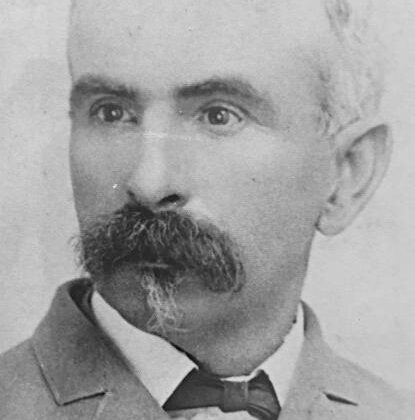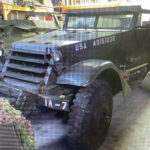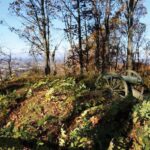
On July 15, 1864, men from Colonel James J. Neely’s Brigade (including men from Tipton County) were detailed to bury the Confederate soldiers killed on the north side of the Pontotoc-Tupelo Road where Mabry’s Mississippians had advanced against the Federals. John Johnston took note of the rear of the Federal breastworks on the Pontotoc Road. He wrote:
“Here we found an embankment thrown up several feet high and in part braced up by logs in front. This was true as to the line on the north of the road, which slopped downward somewhat along the edge of a sort of ravine or basin. This part of their line was very strong. In attacking, our men (Mabry’s Mississippians) had to march through an open barren common for about 50 or 75 yards—the ground first slopping downward for some distance and then upward to the enemy breastworks which crowned the crest of a low ridge. Out in this little space of ground we found the dead bodies of our men thickly strewn, and in some instances several bodies piled across each other. These corpses were so black that we, at first glance, thought they were Negroes; but they had lain in the hot…sun all the day before and all this day and had been burned black and were in a state of loathsome corruption and covered with living vermin.
“Just west of this open space was a small stretch of open timber, extending probably 50 yards across. We found the dead (T. H. Bell’s Tennesseans) lying thick all through this wood also, but not so numerous as in the space just mentioned. Our task of burying these poor fellows was loathsome and disgusting and very painful, for our limbs were very stiff and sore from the extraordinary marching—and the ground was baked very hard by the sun. With great labor we could succeed in digging only very shallow graves into which we dragged the corpses, sometimes several in one grave, and covered them up the best we could. We worked on at our gruesome task all that afternoon until the afternoon of the next day.
“About 10 o’clock in the morning (July 16th) Gen. Forrest rode up in an open top buggy to a point in the road opposite to where we were working, and about 100 feet away and called to us saying, ‘Bury them deep, boys.’ We replied that we were doing the best that we could….General Forrest had been shot in the foot the evening before in a skirmish with the enemy on their retreat….He was all alone when we saw him.”
The Harrisburg-Tupelo action was the last major battle fought in Mississippi. More than 20,000 soldiers participated in the campaign. Federal losses: 69 killed, 501 wounded, 32 missing (total 602); Confederate casualties: 215 killed, 1,116 wounded, 51 missing (total 1,382).
J. P. Young reported the 7th Tennessee Cavalry, “at the close of the operations, July 17, 1864, only 433 (of the 595) men answered at roll-call, a reduction by death, wounds, or prostration of 162 men.”
Tipton’s soldiers accounted for five killed and eight wounded.
Killed: Company B, Sergeant Major Charles N. Claiborne; Company I, Joseph Brown, Joshua D. Clark, Lieutenant John A. Douglas, Newton Owen.
Wounded: Company B, James M. Myers, George Brock Sale, Color Sergeant Egbert H. Sheppard, John F. Smith, T. B. Walk; Company I, Color Sergeant H. P. Cotton, Alexander Lippman and John Somervell.
Correction: In last week’s column reference was made to Sergeant James Marshall as a wounded Tipton soldier. It should have read Sergeant “James Marshall Hill” of Brighton.




